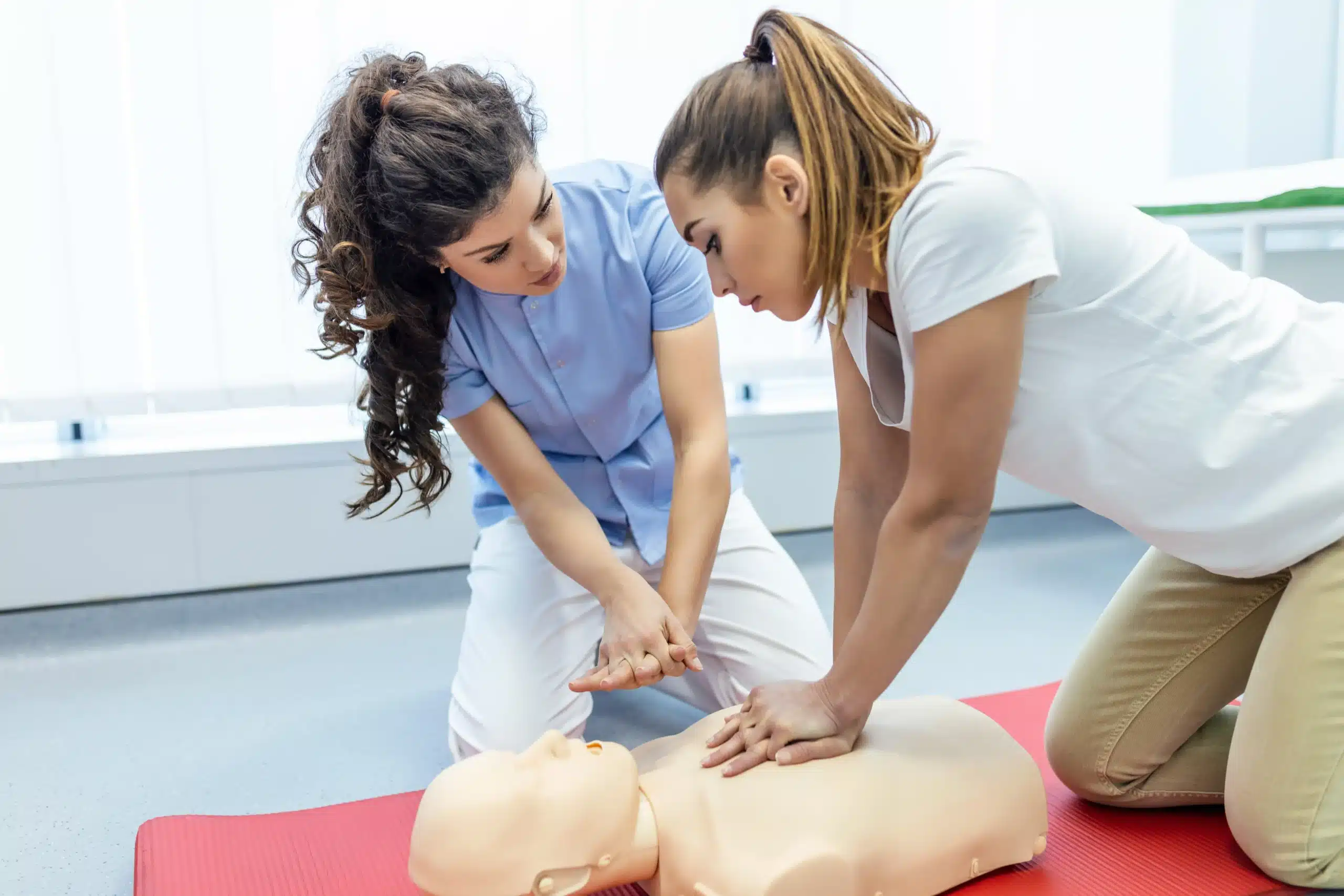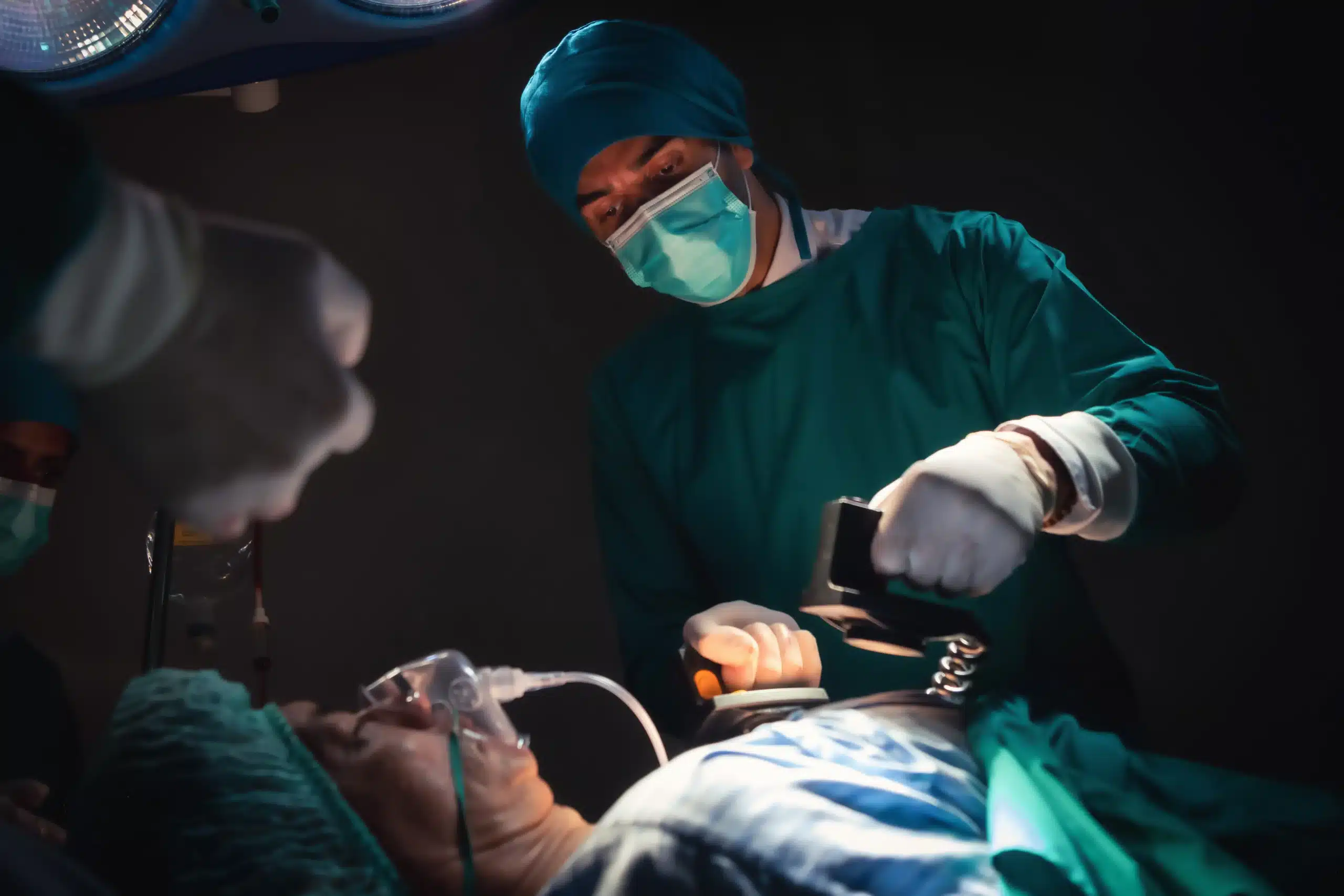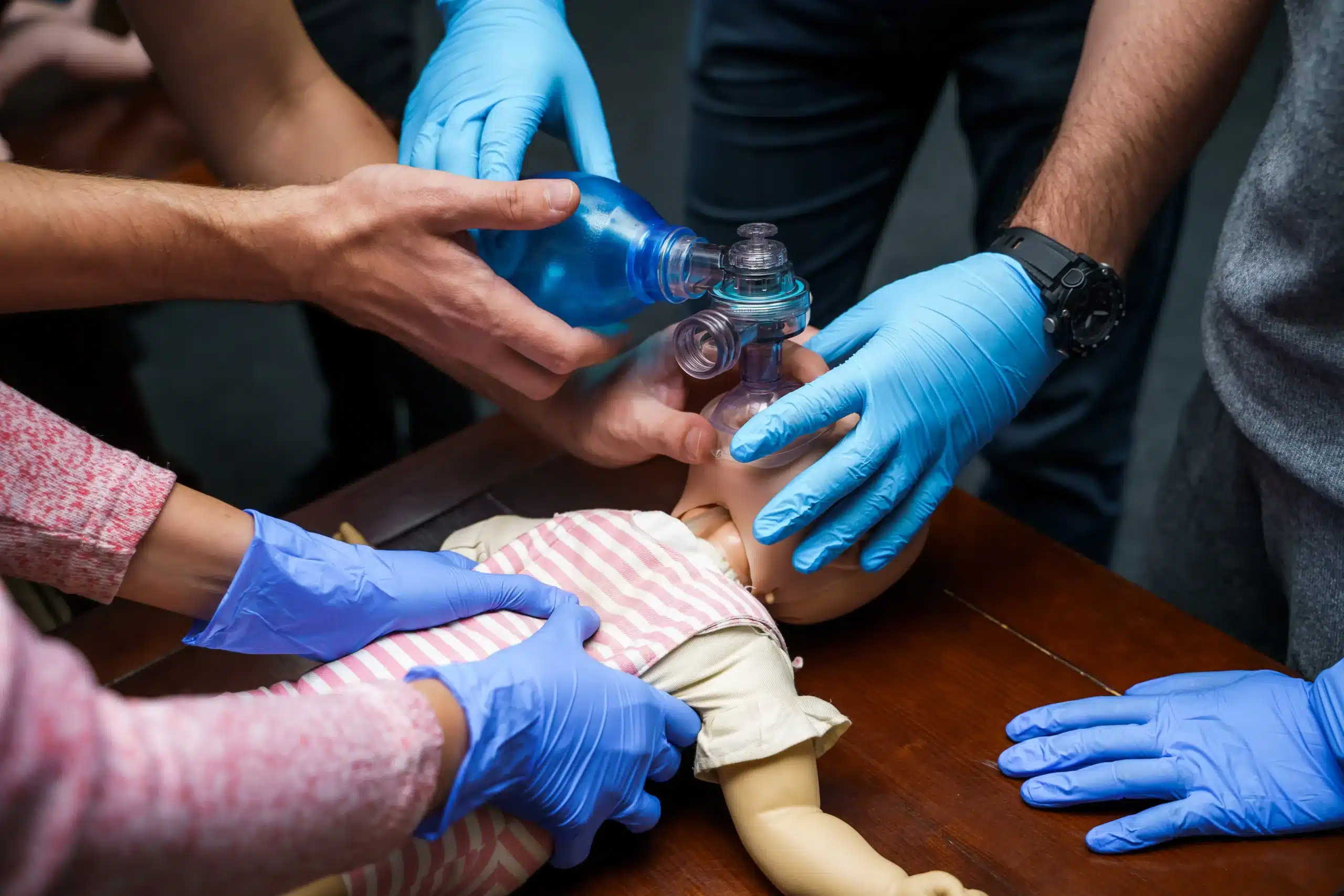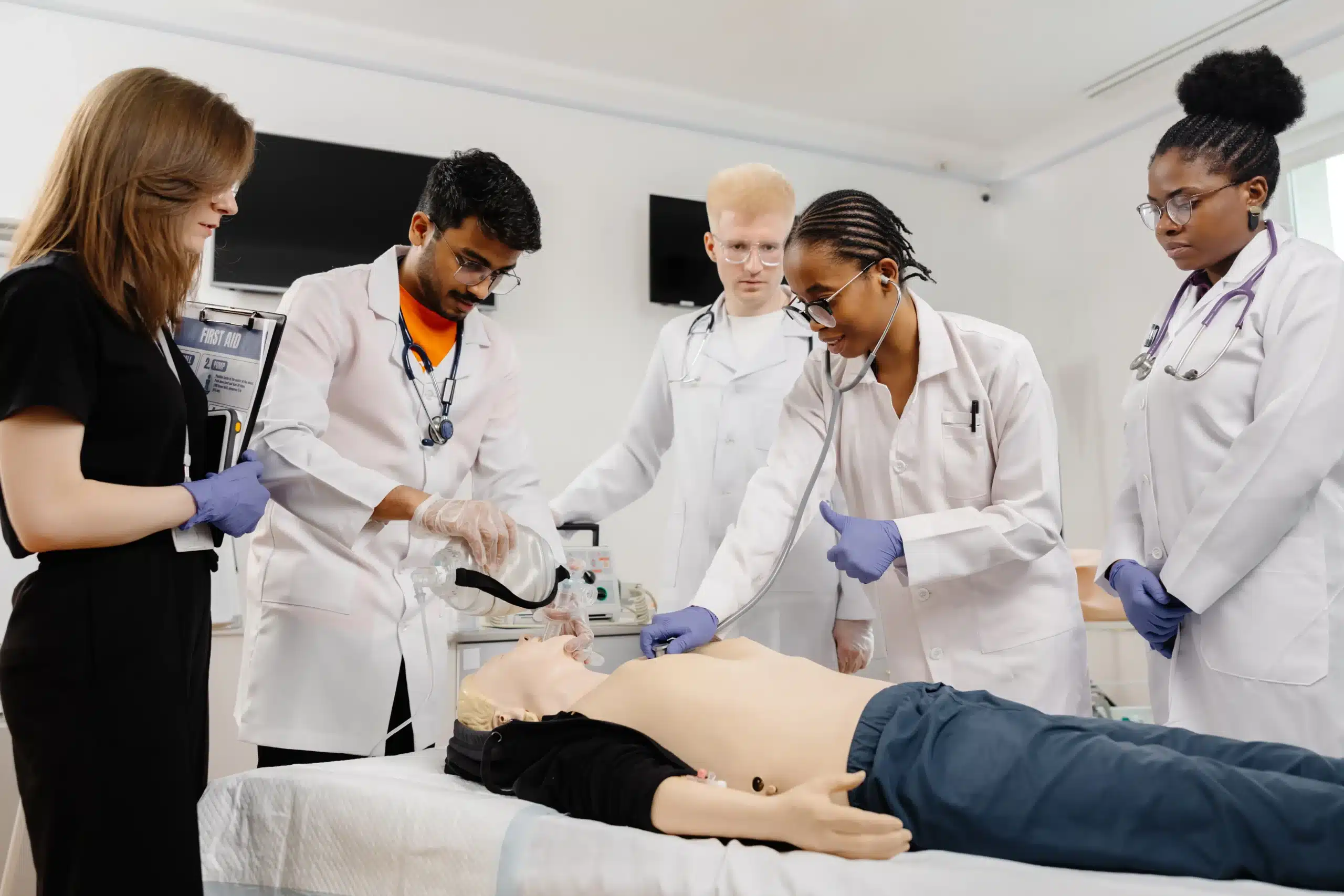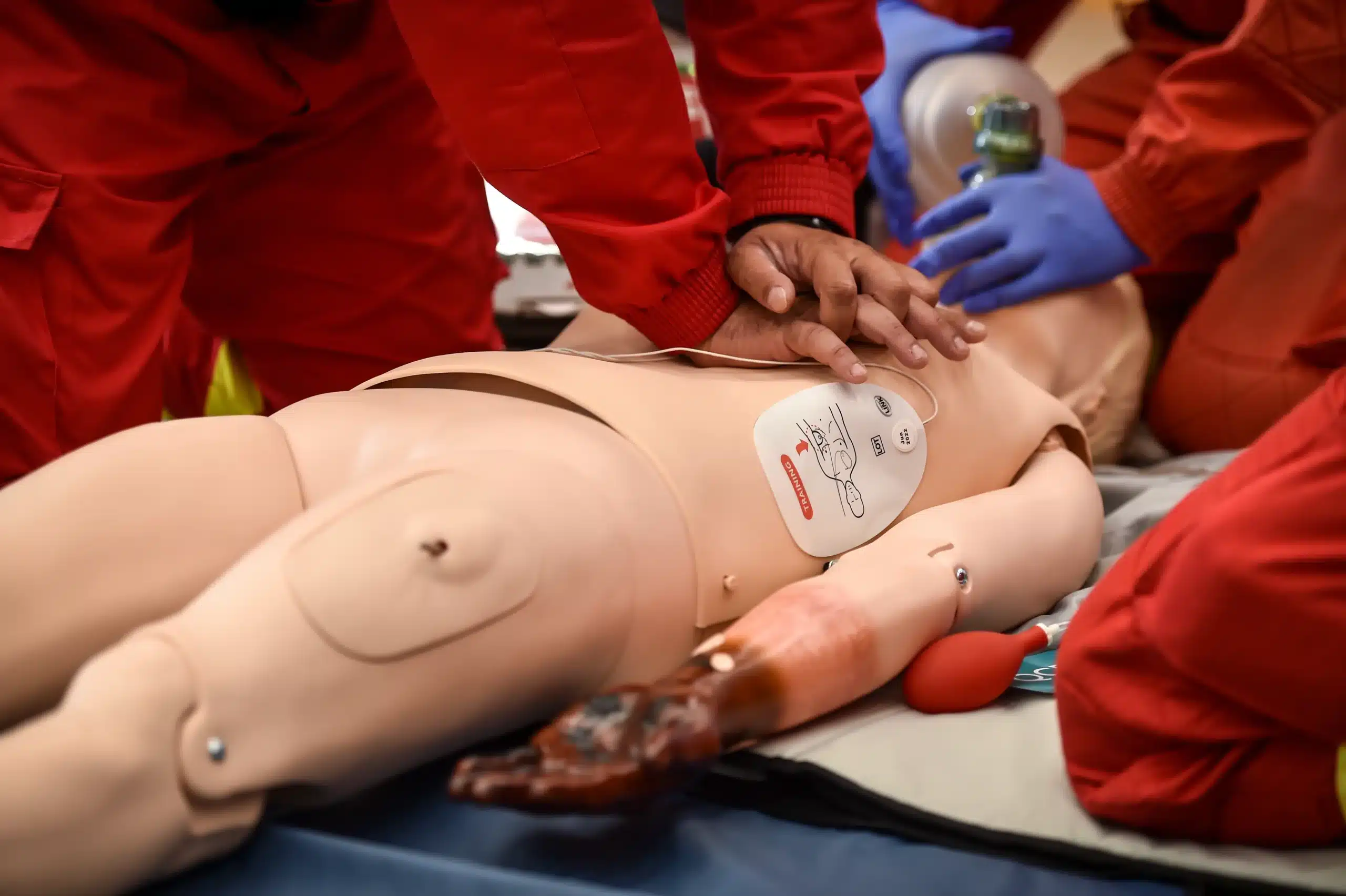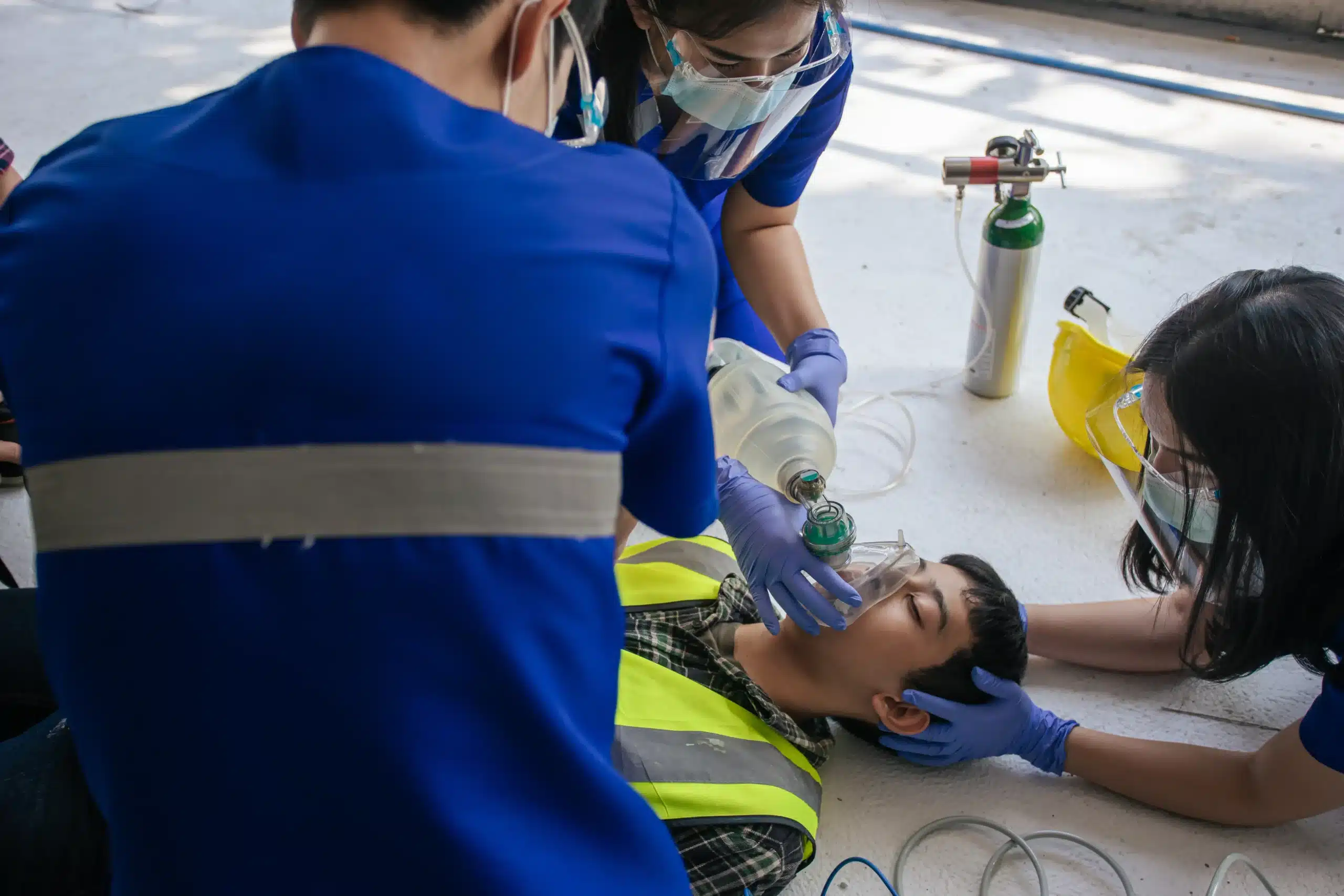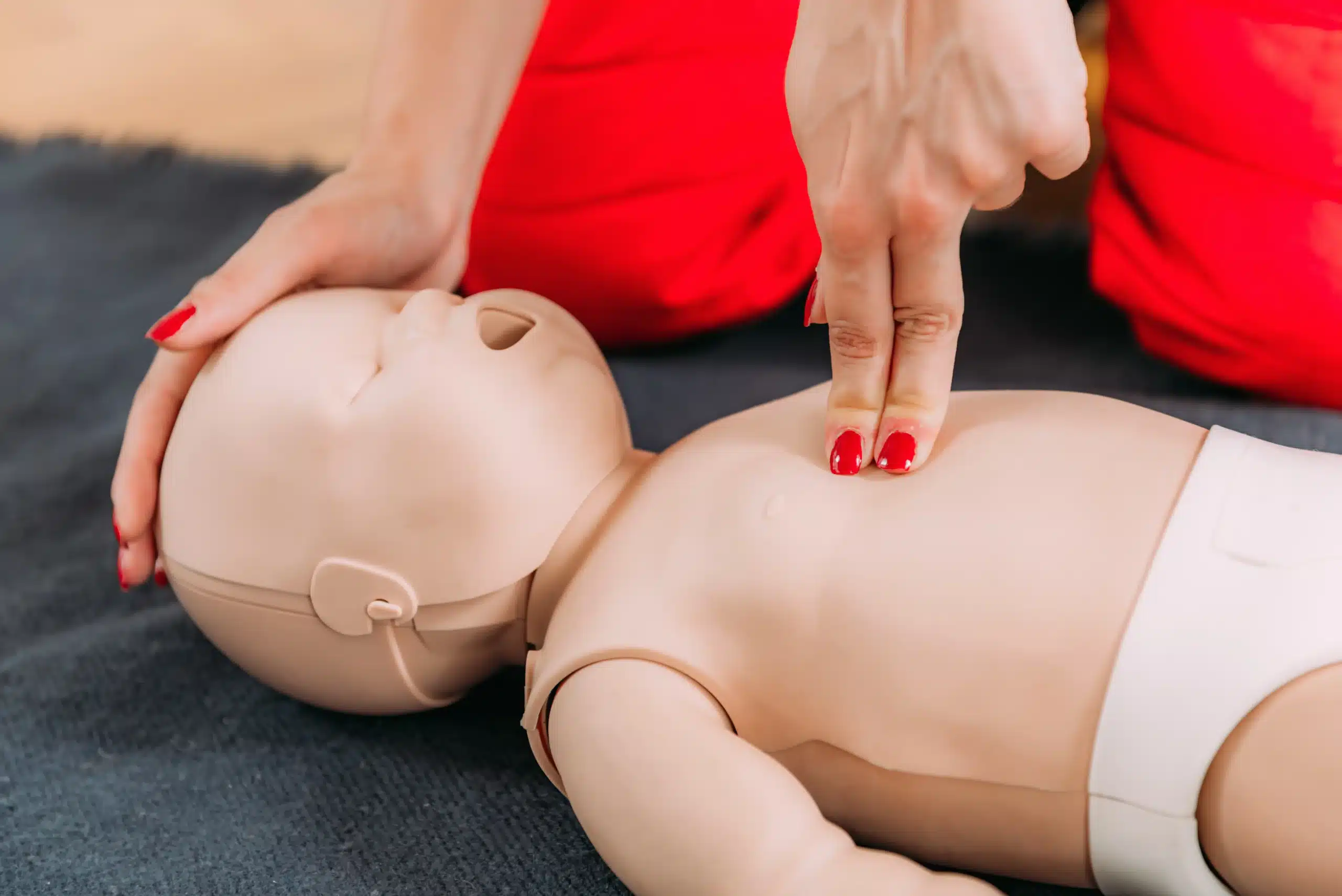As a healthcare provider, your BLS certification is more than just a credential—it’s a lifeline. It’s the confidence to act quickly and effectively when every second counts. But like any skill, BLS requires regular refreshing. If your BLS recertification date is approaching, or if you’re simply looking to brush up on your skills, this guide is for you. We’ll explore everything from online courses to in-person training, helping you find the perfect “bls recertification near me.” Because in healthcare, staying current isn’t just important—it’s essential.
Key Takeaways
- Maintain your lifesaving skills with BLS recertification: Staying current with the latest guidelines and techniques ensures you’re prepared to respond effectively in emergencies.
- Select the right course format for your lifestyle: Whether you prefer online convenience, in-person interaction, or a blended approach, choose a format that fits your learning style and schedule.
- Research providers to find the best fit: Consider accreditation, instructor experience, and course costs to make an informed decision about your BLS recertification training.
What is BLS Recertification?
BLS Recertification is for healthcare providers who already hold a valid Basic Life Support (BLS) certification. It’s how you maintain your skills and knowledge so you can continue to respond effectively to life-threatening emergencies. Like most medical certifications, your BLS certification expires every two years. Recertification ensures you’re prepared to act quickly and confidently when every second counts.
Key BLS Recertification Components
BLS recertification courses, offered by organizations like the Red Cross, cover core life-saving techniques. You’ll review essential skills such as high-quality CPR, using an AED, and relieving choking. The recertification process typically involves completing the course, passing an exam, and receiving a new certification card. These courses adhere to American Heart Association (AHA) standards, ensuring your training aligns with current best practices.
Initial Certification vs. Recertification
The primary difference between initial BLS certification and recertification lies in the assumed level of experience. Initial certification courses provide a foundational understanding of BLS principles for those new to healthcare. Recertification courses, on the other hand, focus on refreshing existing skills and incorporating updated guidelines. It’s a quicker, more focused process designed for experienced professionals. If you’re unsure which course is right for you, this comparison of BLS recertification vs. initial certification may help. For clarity on common misconceptions, this article debunking common BLS myths is a useful resource.
Why Recertify Your BLS?
BLS recertification is essential for anyone working in healthcare or related fields. It ensures your skills are up-to-date and you can respond effectively in emergencies. Beyond checking off a box, recertification offers significant personal and professional benefits. Let’s explore why staying current with your BLS certification is so important.
Stay Current with Guidelines
Healthcare guidelines are constantly evolving. Recertification courses cover the latest updates to BLS guidelines, including changes to CPR techniques, airway management, and the use of automated external defibrillators (AEDs). Staying informed about these updates through BLS recertification can significantly impact patient outcomes. For example, recent changes in chest compression techniques emphasize consistent depth and rate, which improves blood flow and oxygen delivery during CPR. Regular recertification ensures you’re always practicing the most effective methods.
Meet Requirements
Most healthcare employers, including hospitals, clinics, and emergency medical services, require their staff to maintain a current BLS certification. This requirement isn’t arbitrary; it’s a critical standard for patient safety and quality care. Recertification demonstrates your commitment to maintaining your skills and knowledge. A lapse in your certification could impact your employment and limit your career opportunities. BLS certification renewal is typically required every two years, so mark your calendar and plan.
Build Confidence in Emergencies
Regularly reviewing and practicing BLS skills through recertification builds confidence and reduces hesitation in emergencies. When faced with a life-threatening situation, knowing you have the most current training and skills can make all the difference. This confidence not only benefits the patient but also reduces stress and anxiety for the responder. Solid BLS training equips you with the knowledge and skills to act decisively and effectively, potentially saving a life. Recertification reinforces this training, ensuring you’re always prepared.
How Often Should You Recertify?
Knowing when to recertify your Basic Life Support (BLS) skills is crucial for any healthcare professional or individual who uses these skills regularly. Staying up-to-date ensures you’re prepared to provide effective care in emergencies.
Standard Recertification Timelines
Generally, BLS certification is valid for two years. This standard timeframe is recommended by organizations like the American Heart Association. So, mark your calendar! After two years, it’s time to refresh your knowledge and skills through a BLS recertification course. This ensures you’re always ready to respond effectively in critical situations. You can find more information on BLS certification timelines from reputable sources online.
Factors Affecting Recertification
While the standard recertification period is two years, some factors might influence how often you need to update your credentials. For example, your employer might have specific requirements for recertification, potentially more frequent than the standard two-year cycle. Always check your workplace policies to stay compliant. Additionally, staying informed about updates to BLS guidelines is essential. These guidelines can change, so reviewing the most current information before your recertification course or exam will help you succeed. If your recertification involves an in-person skills check, schedule it promptly to avoid missing your deadline. Failing to do so could mean having to retake the entire course, so plan ahead.
BLS Recertification: Online, In-Person, & Hybrid
Getting recertified in BLS is easier than ever, thanks to the range of course formats available. Whether you prefer the convenience of online learning, the hands-on experience of in-person training, or a blend of both, there’s an option that fits your schedule and learning style. Let’s explore the pros and cons of each format.
Online Recertification: Pros & Cons
Online BLS recertification courses offer unparalleled flexibility, allowing you to renew your certification from anywhere with an internet connection. This format is perfect for busy professionals juggling work and family commitments. Many online courses also offer continuing education credits, a bonus for those maintaining professional licenses. However, online recertification may not provide the same level of hands-on practice as in-person training. If you learn best by doing, supplementing your online course with additional practice could be beneficial.
In-Person Training Benefits
In-person BLS recertification provides a structured learning environment with direct interaction with an instructor and other healthcare providers. This format offers opportunities for hands-on practice, feedback, and asking questions in real-time. The face-to-face interaction can be especially valuable for those who thrive in a traditional classroom setting. BLS training is recommended for a wide range of healthcare providers, including MAs, DAs, EMTs, paramedics, RNs, dentists, pharmacists, MDs, and anyone else who works in the medical field.
Hybrid Options: Added Flexibility
Hybrid BLS recertification courses combine the best of both worlds. You’ll complete the cognitive portion of the course online at your own pace, then attend a shorter in-person skills session for hands-on practice and assessment. This blended learning format offers flexibility while still providing the essential hands-on training component. The Blended Learning HeartCode BLS class is a popular example of this hybrid approach.
Choosing the Right Format
The best BLS recertification format depends on your individual learning preferences, schedule, and budget. Consider how you learn best, how much time you have available, and whether you prefer online convenience or in-person interaction. If you’re unsure which format is right for you, reach out to a training provider like Safety Training Seminars to discuss your options. They can help you choose a course that meets your needs and sets you up for success.
Find BLS Recertification Courses Near You
Finding the right BLS recertification course means understanding your options. Here’s a look at some common providers:
Safety Training Seminars
Safety Training Seminars offers a range of BLS certification and recertification courses designed to fit your schedule. They prioritize excellent customer service and affordable pricing, including a low price guarantee. Check their website for courses in your area, including San Francisco, Daly City, San Mateo, and Oakland. They offer BLS, ACLS, and PALS courses in San Francisco and NRP courses in Concord and San Francisco. You can find their BLS courses here, ACLS courses here, PALS courses here, and NRP courses here.
American Heart Association
The American Heart Association (AHA) offers several ways to renew your BLS card, including online and in-person classes. The AHA is a recognized authority on CPR and BLS training, so their courses are widely accepted.
American Red Cross
The Red Cross makes maintaining your BLS certification simple with recertification classes online and in person. Check their website to find a class near you and choose the best format for your needs.
Local Hospitals & Medical Centers
Many hospitals and clinics offer BLS certification courses for staff and the community. Contact hospitals near you to explore their course offerings.
Community Colleges
Community colleges frequently offer BLS recertification, often using blended learning. For example, Northeast Community College’s HeartCode RQI BLS course combines online learning with in-person skills assessments. This can be a budget-friendly option.
What Happens in a BLS Recertification Course?
BLS recertification courses refresh your essential lifesaving skills and knowledge. While specifics might vary slightly based on the provider and format (online, in-person, or blended), here’s a general overview of what to expect:
Course Structure & Duration
BLS recertification courses are designed to be efficient, recognizing your existing knowledge. Online BLS certification courses make getting recertified easier for busy professionals. Expect a shorter course than your initial BLS certification, often completed in a single day or less for online options. Blended learning, combining online coursework with an in-person skills session, offers flexibility. Many providers structure their courses around the American Heart Association (AHA) guidelines, ensuring you’re learning the latest techniques.
Skills Assessment & Practice
Recertification courses assess your current skill level. You’ll review and practice core BLS skills, including CPR (for adults, children, and infants), AED use, and relief of choking. Some courses, like the HeartCode RQI BLS, use innovative tools like voice-assisted manikins (VAM) to provide real-time feedback. This technology enhances your learning and helps refine your technique.
Written Exam
A written exam is a standard component of BLS recertification. It evaluates your understanding of key concepts, such as recognizing life-threatening emergencies, high-quality CPR performance, and the AHA Chain of Survival. The exam format can vary, from multiple-choice questions to case studies.
Hands-On Skills Evaluation
A practical skills evaluation demonstrates competency. You’ll perform BLS skills in front of a certified instructor, who will assess your technique and provide feedback. This hands-on component ensures you can apply your knowledge in a real-world emergency. The Blended Learning HeartCode BLS class combines online learning with an in-person skills session led by an AHA instructor.
Continuing Education Credits
Many BLS recertification courses offer continuing education (CE) credits. These credits can be valuable for maintaining professional licenses or certifications in various healthcare fields. Check with your specific licensing board or professional organization to see if the CE credits from a particular course meet their requirements. Completing a BLS recertification course often provides continuing education credits.
Choose the Right BLS Recertification Provider
Finding the right BLS recertification provider means doing a little homework. Compare options to find a program that fits your needs and keeps your skills sharp.
Accreditation & Recognition
A reputable provider should offer courses accredited by a nationally recognized organization like the American Heart Association (AHA). The AHA offers several renewal paths, including online courses and in-person classes. Accreditation ensures the course aligns with current guidelines and is accepted by most employers.
Course Format & Flexibility
Think about your learning style and schedule. Online recertification offers flexibility, letting you learn at your own pace. In-person classes provide hands-on practice and direct interaction with an instructor. Hybrid learning combines online modules with a shorter in-person skills session—a nice balance between flexibility and hands-on learning. Some providers specialize in this blended format. For those who prefer entirely online learning, providers like ACLS Medical Training offer 100% online BLS recertification courses.
Cost & Discounts
Course costs vary. Ask about discounts for students, healthcare professionals, or groups. Some providers, like eMedCert, offer BLS certification for $90, with recertification often costing less. Factor in any extra costs like study materials or card fees.
Instructor Qualifications
Make sure instructors are certified and experienced in BLS. AHA-certified instructors deliver high-quality instruction and can answer your questions thoroughly. Choose providers who emphasize instructor qualifications and maintain high training standards.
Student Reviews & Ratings
Reading past student reviews can give you a sense of the course quality. Check online platforms or the provider’s website for testimonials. Positive reviews often signal a well-structured course, knowledgeable instructors, and a good learning environment.
Employer Requirements
Check your employer’s BLS recertification requirements before you enroll. Some hospitals might prefer in-person training, while others accept online certifications. Knowing the rules beforehand ensures your recertification is valid at your workplace.
Related Articles
- BLS Renewal in SF: Your Easy Recertification Guide – San Francisco CPR Classes
- BLS Renewal Near Me: Your Complete Guide – San Francisco CPR Classes
- BLS Certification in San Francisco: Your Complete Guide – San Francisco CPR Classes
- BLS Certification in San Francisco: The Complete Guide – San Francisco CPR Classes
- BLS for Healthcare Providers in SF: A Practical Guide – San Francisco CPR Classes
Frequently Asked Questions
How long is my BLS certification valid? BLS certification is typically valid for two years. It’s essential to recertify before your current certification expires to maintain your skills and meet employer requirements.
What’s the difference between BLS certification and recertification? Initial BLS certification provides a foundational understanding of life-saving techniques. Recertification courses are designed for healthcare providers who already hold a valid BLS certification and want to refresh their skills and learn updated guidelines. Recertification is a shorter, more focused process.
What are my options for BLS recertification? You have several options for BLS recertification: online, in-person, and hybrid courses. Online courses offer flexibility, while in-person courses provide hands-on practice and interaction with an instructor. Hybrid courses combine online learning with an in-person skills session. Choose the format that best suits your learning style and schedule.
How can I find BLS recertification courses near me? Several organizations offer BLS recertification courses, including Safety Training Seminars, the American Heart Association, the American Red Cross, local hospitals and medical centers, and community colleges. Check their websites or contact them directly to find a course in your area.
Why is BLS recertification important? BLS recertification is crucial for staying current with the latest guidelines, meeting employer requirements, and building confidence in emergencies. It ensures you’re prepared to provide effective care and potentially save lives.


